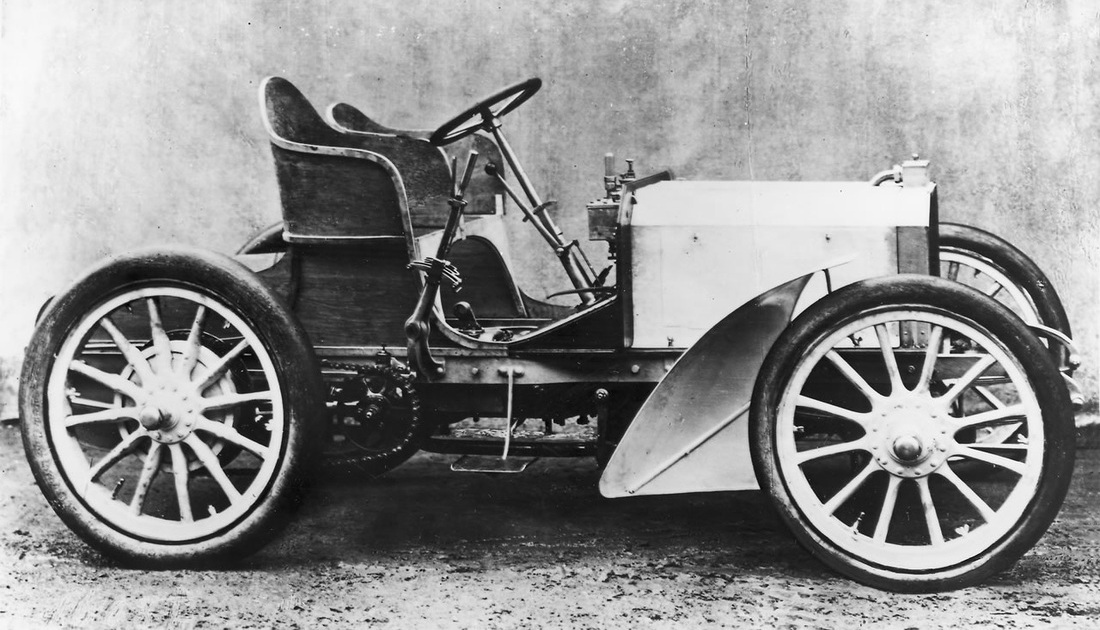Reimagining the first Mercedes
The 1901 Mercedes Simplex 35 PS was the first car to be called a Mercedes and it is also considered by many to be the first modern automobile in terms of mechanical layout (though Panhard Lavassor enthusiasts might disagree, as that firm made a front-engine motorcar a decade earlier). To celebrate the opening of its new international design center in Nice, France, Mercedes-Benz has created the Vision Mercedes Simplex concept, inspired by the 35 PS, which raced 118 years ago at Nice. While it may look very much like it’s more than century-old inspiration, the new concept uses the latest in electric propulsion. Make that the latest in theoretical electric propulsion, as the concept is non-operational. Daimler, in fact, calls it “a sculpture.”
Prior to the 35 PS, most motor cars were essentially converted horse-drawn carriages with wooden frames, tall and skinny wheels, and bodies that were often taller than they were wide or long. Driver and passenger sat up high, with the engines or electric motors mounted mid-ship, just beneath the body, also high off of the ground. The high center of gravity impaired stability, and after Daimler-Motoren-Gesellschaft (DMG) engineer Wilhelm Bauer died when his Daimler Phoenix crashed in the 1900 Nice–La Turbie race, Daimler distributor Emil Jellinek commissioned the factory to build three dozen innovative motorcars. They had longer wheelbases with the engine located up front and mounted low in the chassis, Bosch electric ignition, and a front-mounted, honeycomb radiator, per Wilhelm Maybach’s latest design (contrasting with Renault’s, which had the radiator placed behind the engine, just in front of the firewall). As Panhard Levasssor owned the rights to the Daimler name in France, Jellinek named the car after his daughter, Mercedes. It was called the Simplex because it was relatively easy to operate, compared to other early motorcars.
The Mercedes 35 PS dominated the 1901 Nice – La Turbie races.

To call the Vision Mercedes Simplex concept a retro design is an understatement, at least in terms of styling. It reproduces the original Mercedes 35 PS’ open, minimalist two-seat cockpit, turn-of-the-century styling, and absence of windscreen or doors. The original was powered by a front-mounted 35-horsepower gasoline engine, with chain drive to the rear wheels. Daimler isn’t giving any power ratings for the new concept, but it has an entirely different propulsion system, with four electric motors mounted in the wheel’s fixed hubs—only the tires theoretically can spin. A rose gold-colored faux radiator grille evokes the original’s bronze heat-exchanger, but since the Vision Mercedes Simplex is a sculpture, it doesn’t need a radiator, so Mercedes’ designers have turned it into a 3D screen for displaying animations.
Retro touches abound, including leather hood straps and a leather overnight bag hanging between the two rear wheels. As with the original, the tiller-like steering column is almost vertical, going directly into the floorboards, topped with a wooden steering wheel. A “hyper analogue” display that shows only the information the driver needs at the time is housed in a rose-gold rimmed instrument cluster. The azure blue upholstery, said to be inspired by the Côte d’Azur nearby to Nice, is in sharp contrast to the two-tone body that has a white engine cowl and a black passenger compartment.
20190916180525)
20190916180245)
20190916180256)
20190916180304)
20190916180312)
20190916180318)
20190916180426)
20190916180433)
20190916180440)
20190916180447)
20190916180456)
20190916180505)
20190916180517)
20190916180535)
20190916180545)
20190916180555)
20190916180603)
20190916180614)
20190916180624)
20190916180634)

